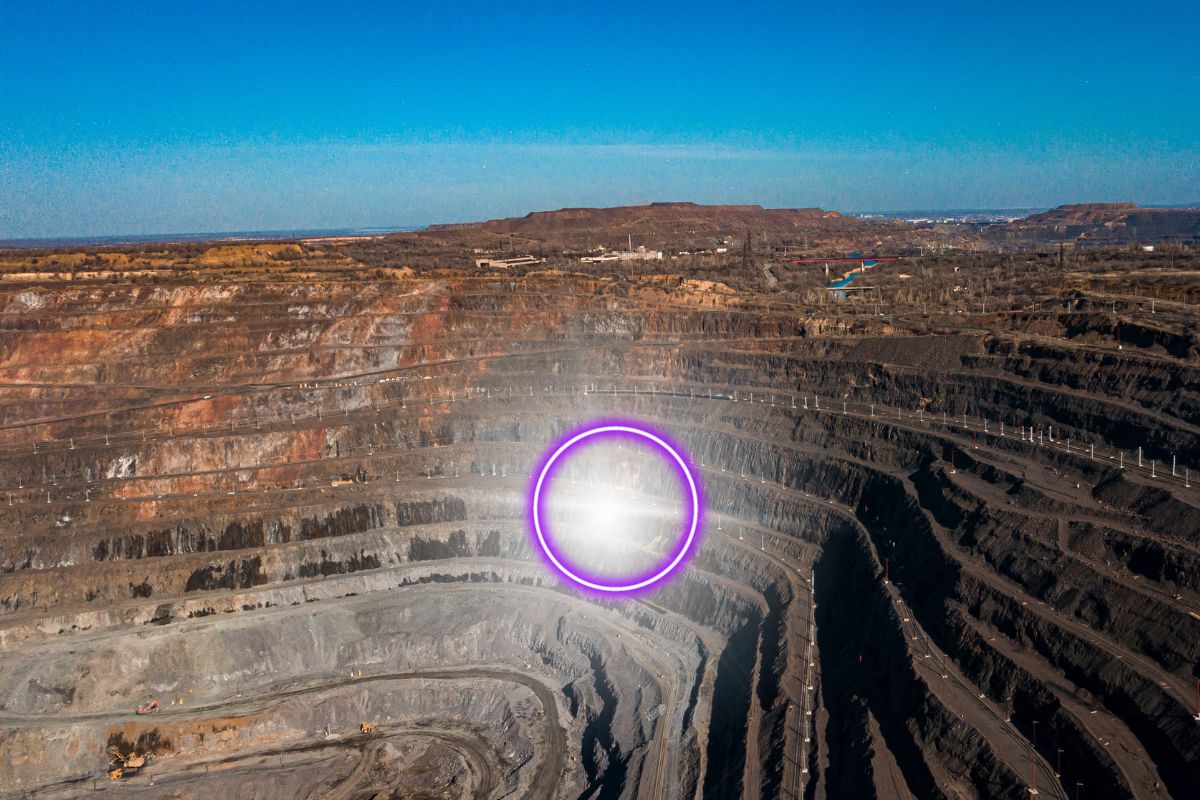Show table of content Hide table of content
The discovery of a massive gold deposit beneath Pingjiang county in China’s Hunan province has sent shockwaves through the global precious metals market. Chinese geological experts initially located this extraordinary find at 2,000 meters below ground level. Further drilling operations reaching depths of 3,000 meters have already yielded over 300 tonnes of gold, with total reserves estimated to exceed 1,100 tonnes. This remarkable discovery, valued at approximately 78 billion euros, represents one of the most significant gold finds in recent history, potentially reshaping China’s already dominant position in the global gold market.
Unprecedented gold discovery transforms China’s mining landscape
The newly discovered gold deposit in Hunan province features over 40 gold veins with an exceptional concentration of 138 grams per ton of ore. This extraordinary purity significantly exceeds the industry average, making it one of the most valuable mineral discoveries of the decade. The Wangu gold field, as it’s being called, could transform Hunan province into a global gold mining powerhouse.
Mining operations at this depth require sophisticated technology and expertise. Chinese geological teams have employed cutting-edge exploration techniques that could revolutionize deep mining operations worldwide. These innovations might establish new standards for the global mining industry, similar to how Apple revolutionized technology markets with proprietary systems that changed industry standards.
Economic benefits from this massive gold deposit will extend far beyond the mining sector itself. Thousands of new jobs are expected in extraction, transportation, and refining operations. Local communities will likely experience an economic boom as infrastructure development accelerates to support mining activities. Regional businesses, from equipment suppliers to service providers, stand to benefit substantially from this geological windfall.
Environmental considerations remain crucial despite the economic potential. Chinese authorities face the challenge of balancing industrial development with ecological protection. The deep mining operation presents unique environmental challenges, requiring careful management of waste materials and water resources to minimize impact on surrounding ecosystems.
Global gold market implications amid economic uncertainty
This massive discovery comes at a time when gold prices have reached historic highs, currently trading at $2,800 per ounce. Market analysts attribute this price surge to several factors, including international tensions, trade wars, the ongoing Ukraine conflict, and disputes over Taiwan. These geopolitical uncertainties have traditionally driven investors toward gold as a safe haven asset.
Central banks worldwide, particularly in Eastern European countries, have been steadily increasing their gold reserves. This trend reflects growing concerns about currency stability and represents a strategic shift in national asset management approaches. The value of such holdings has become increasingly apparent, similar to how rare artifacts and artworks can represent immense stored value during times of economic uncertainty.
Science This strange red lake in Tanzania turns animals to ‘stone’.
China already holds the position of both largest producer and consumer of gold globally, with annual production exceeding 370 tonnes. In 2023 alone, the Chinese central bank added 225 tonnes to its reserves, further solidifying its market dominance. This new discovery could potentially increase China’s production capacity by nearly 300%, depending on extraction rates.
Market experts predict the Hunan discovery could influence global gold prices over the long term. While short-term prices might experience volatility as markets adjust to news of increased supply, the growing industrial and investment demand for gold will likely maintain strong pricing pressure for years to come.
Reshaping the global gold reserve landscape
The Hunan discovery dramatically alters the international gold reserve landscape. Currently, Australia leads global reserves with approximately 12,000 tonnes, followed by Russia with 11,000 tonnes and South Africa with 5,000 tonnes. South Africa’s South Deep mine, previously ranked as the world’s second-largest deposit with reserves of 1,025 tonnes, may now be outranked by the Wangu field if estimated reserves prove accurate.
Continued exploration around the Wangu gold field suggests even more significant discoveries might be forthcoming. The geological formations in the region share characteristics with other major gold-producing areas worldwide, indicating potential for additional finds. This exploration represents a significant investment, similar to how major tech leaders allocate billions toward promising new ventures with potentially transformative returns.
The technical challenges of extracting gold from depths of 2,000-3,000 meters cannot be overstated. Such operations require specialized equipment, extensive safety protocols, and significant energy resources. Chinese mining engineers have developed innovative extraction methods that minimize environmental impact while maximizing yield, potentially establishing new industry standards.
Regional development around the mining site has already begun, with infrastructure improvements and housing construction accelerating rapidly. Local authorities are working to ensure community benefits while mitigating potential negative impacts from the massive industrial development. This balancing act represents a case study in sustainable resource extraction that many nations will watch closely.
As production scales up over the coming years, this single discovery could potentially alter global gold supply chains and influence international monetary policies. With central banks worldwide increasingly returning to gold as a stabilizing asset, China’s enhanced production capacity may provide strategic advantages in international financial negotiations and trade arrangements for decades to come.


